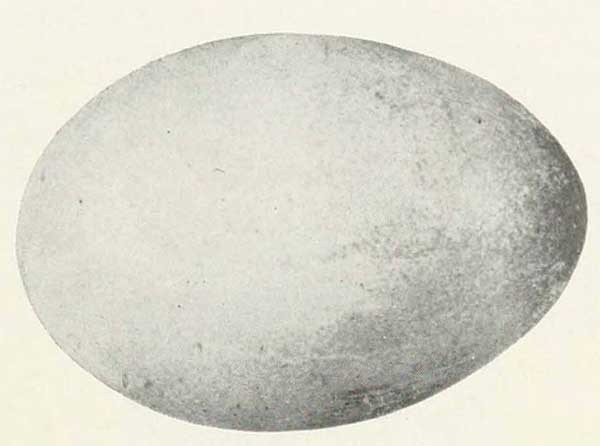Superregnum: Eukaryota
Regnum: Animalia
Subregnum: Eumetazoa
Cladus: Bilateria
Cladus: Nephrozoa
Superphylum: Deuterostomia
Phylum: Chordata
Cladus: Craniata
Subphylum: Vertebrata
Infraphylum: Gnathostomata
Superclassis: Tetrapoda
Cladus: Reptiliomorpha
Cladus: Amniota
Classis: Reptilia
Cladus: Eureptilia
Cladus: Romeriida
Subclassis: Diapsida
Cladus: Sauria
Infraclassis: Archosauromorpha
Cladus: Crurotarsi
Divisio: Archosauria
Subsectio: Ornithodira
Subtaxon: Dinosauromorpha
Cladus: Dinosauria
Ordo: Saurischia
Cladus: Theropoda
Cladus: Neotheropoda
Infraclassis: Aves
Cladus: Euavialae
Cladus: Avebrevicauda
Cladus: Pygostylia
Cladus: Ornithothoraces
Cladus: Euornithes
Cladus: Ornithuromorpha
Cladus: Ornithurae
Cladus: Carinatae
Parvclassis: Neornithes
Cohors: Neognathae
Ordo: Charadriiformes
Subordo: Alcae
Familia: Alcidae
Genus: Aethia
Species: Aethia psittacula
Name
Aethia psittacula (Pallas, 1769)

Aethia psittacula egg
References
Spicilegia zoologica 1 fasc.5 p. 13 pl.2,5 fig.4,5,6
Vernacular names
English: Parakeet Auklet
Esperanto: Papaga aŭko
suomi: Punanokkakiislanen
français: Starique perroquet
lietuvių: Dailiasnapė alkelė
русский: Белобрюшка
Türkçe: Papağan dalıcımartı
The parakeet auklet (Aethia psittacula) is a small seabird of the North Pacific. Parakeet Auklets used to be placed on its own in the genus Cyclorrhynchus (Kaup, 1829) but recent morphological and genetic evidence suggest it should be placed in the genus Aethia, making them closely related to crested auklets and least auklets. It is associated with the boreal waters of Alaska, Kamchatka and Siberia. It breeds on the cliffs, slopes and boulder fields of offshore islands, generally moving south during the winter.
Description
The parakeet auklet is a small (23 cm) auk with a short orange bill that is upturned to give the bird its curious fixed expression. The upward bend of the beak has been observed to provide advantages in picking up small food pieces from the sea bottom as well as in assisting in the disintegration of larger food objects. [3]The bird's plumage is dark above and white below. with a single white plume projecting back from the eye. There is a small amount of variation between breeding and winter plumage.
The parakeet auklet is a highly vocal species at the nest, calling once it arrives at the nest and then duetting once its mate arrives. It makes a series of rhythmic hoarse calls (like that of the Cassin's auklet) and a quavering squeal. The function of these are unknown, but could be associated with defending its burrow from intruders and strengthening the bond with its mate.
Behaviour and breeding
The parakeet auklet is highly social in its breeding colonies.
The parakeet auklet's food varies with season, during the breeding season it takes mostly small planktonic crustaceans such as euphausiids, copepods and amphipods. Recent research shows it also preys on jellyfish in some areas. It often feeds at a considerable distance from the colony, diving up to 30 m to reach its prey.
Breeding begins in April and May in colonies that are often shared with other auk species. The pair lay one egg, which is incubated for just over a month, the chick is then fed 4 times a day for around 35 days. The chick fledges at night, flying out to sea alone.
Status and conservation
Closeup of the head, Pribilof Islands, Alaska
The parakeet auklet is not considered threatened, there are estimated to be over a million individuals in the North Pacific. It is not thought to have declined recently, but may be threatened in the future by introduced predators and oil spills.
References
BirdLife International (2020). "Aethia psittacula". IUCN Red List of Threatened Species. 2020: e.T22694906A168849515. doi:10.2305/IUCN.UK.2020-3.RLTS.T22694906A168849515.en. Retrieved 13 November 2021.
Gaston, A.J. and Jones, I.L. 1998. The Auks: Alcidae. Bird Families of the World. Oxford University Press, 349pp.
Badikova, A. A.; Dzerzhinsky, F. Ya.; Kuznetsov, A. N. (2019-12-01). "Functional Morphology and Adaptive Significance of the Jaw Apparatus of the Parakeet Auklet (Aethia psittacula, Alcidae)". Biology Bulletin. 46 (7): 666–678. doi:10.1134/S1062359019070021. ISSN 1608-3059. S2CID 211218208.
Collinson, Martin. 2006. Splitting headaches? Recent taxonomic changes affecting the British and Western Palaearctic lists British Birds 99: 306-323.
del Hoyo, J., Elliott, A. and Ssargatal, J. (eds.) 1996 Handbook of the Birds of the World, Vol. 3: Hoatzin to Auks. Lynx Edicions: Barcelona, Spain. ISBN 84-87334-20-2
Harrison, P.. 1983. Seabirds, an Identification Guide. Houghton Mufflin Co.: Boston, USA. 448pp. ISBN 0-7470-1410-8
"National Geographic" Field Guide to the Birds of North America ISBN 0-7922-6877-6
Sibley, D.A. 2001. The Sibley Guide to Birds. Alfred Knopf: New York, USA. ISBN 0-679-45122-6
"Aethia psittacula". Integrated Taxonomic Information System. Retrieved 24 February 2009.
Retrieved from "http://en.wikipedia.org/"
All text is available under the terms of the GNU Free Documentation License


